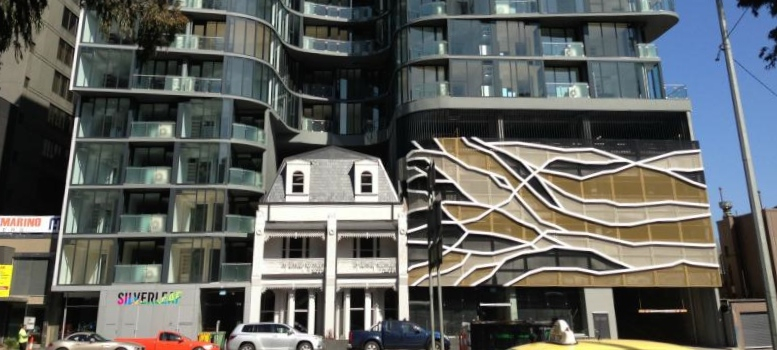University of Melbourne Urban Heritage Conference – Day 2 Wrap-up

Day 2 commenced with formalities from Professor Jaynie Anderson and University of Melbourne Vice Chancellor, Professor Glyn Davis, who introduced Robert Doyle, Lord Mayor of Melbourne.
Robert Doyle touched on his dislike for modernism in twentieth-century planning and reverence for Victorian architecture, suggesting Modernist buildings look “plonked down” into the streetscape. He then went on to discuss Melbourne’s lost nineteenth-century markets, and the challenges facing the City of Melbourne in redeveloping Queen Victoria Market. He spoke of his ambitions to turn the current carpark (and former cemetery) into a green space for market users and surrounding residents, seeing it as a “softer version” of Federation Square (forgetting to mention the adjacent Flagstaff Gardens, which already provide this amenity.) He described Franklin Street as “a mess” and reiterated Council’s plans to fund the market redevelopment by finding a private partner to redevelop the southern end of the market for residential, retail and carparking. He also flagged his preference to scrap plans for an underground carpark beneath the heritage sheds in favour of aboveground parking at an adjacent site. The Lord Mayor also explained that he is already working with Greg Hunt on setting up a World Heritage nomination for Queen Vic Market (which would be nominated after the redevelopment), which they hope will be piggybacked onto a broadening of the Royal Exhibition Building World Heritage Site into a larger series of Victorian-era heritage places.
Peter Lovell then presented an engaging look at “the limits of acceptable change” in built heritage, lamenting that we no longer live comfortably with the imperfect patina of heritage fabric. He described heritage in the CBD as a “familiar skin” which in some ways is conserved for its familiarity more than its own sake (literally seen in examples of facadism). He pointed out that social values and interiors are rarely considered in heritage planning, which only thinly addresses historical context.
He described the 1970s listing process as defensive and reactive, about protecting and preserving, not about integrating places into a planning framework, and it definitely never considered post-war architecture. He pointed out that the tension remains over this post-war architecture, with 9 recommended listings removed from C186.
The heritage experience is not limited to the facades of Collins St, or even the front row buildings, but the broader Hoddle Grid. He reinforced the view that the importance is the narrative, not preserving one period – “We should not imagine that our chapter is the last, but leave space for co-authors in the future to write theirs.
Graeme Davison took us on a nostalgic but measured romp through the evolution of the 1970s heritage conservation movement. He spoke of ‘trendies’ moving into the inner city and setting up residents associations which turned into ‘young and angry’ groups of activists who lead the charge for heritage conservation. Davison commented that these groups may have eventually done their job too well, setting up a professional heritage industry in whom the community have placed their faith to hold the line of heritage conservation. He made several fair observations about the National Trust turning its focus towards custodianship of the properties it has accumulated, rather than spending its limited resources on mounting grassroots campaigns, and how the community appears to have stepped back, assuming their interest and effort are no longer required.
Davison appealed for consideration of Melbourne’s heritage as more than the sum of its old buildings, highlighting the importance of context and social value. He recalled that the challenge of the 1970s & 80s was to conserve the best of the city’s heritage, and suggested the challenge of today is to ensure the heritage is not left friendless in the streetscape, stating ‘heritage is a living thing to be nurtured, not a relic to be preserved’.
Check the blog later today for more on yesterday’s proceedings.
+ There are no comments
Add yours